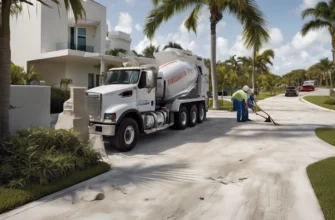- Exploring Work Costs in Miami’s Vicinity: Pest Control Expenses
- Cost Range for Pest Control Expenses in Miami’s Vicinity
- Florida’s Average Cost for Pest Control Services
- Estimating Material Costs for Pest Control Jobs
- Determining Material Quantity Based on Job Size
- Time Required for Pest Control Work Depending on Workload
- Essential Professional Tools for Effective Pest Control
- Step-by-Step Process for Pest Control with Common Mistakes to Avoid
Exploring Work Costs in Miami’s Vicinity: Pest Control Expenses
Cost Range for Pest Control Expenses in Miami’s Vicinity
Pest control is an essential service required to maintain a healthy and hygienic living environment in Miami and its neighboring cities. When it comes to pest control expenses, homeowners and businesses often wonder about the cost range associated with these services. The cost of pest control in Miami’s vicinity can vary depending on various factors such as the type of pests, the size of the infestation, and the complexity of the treatment required.
To give you an idea of the cost range for pest control expenses, we have compiled a table outlining the average prices for common pest control services in Miami’s vicinity:
| Pest Control Service | Average Cost Range |
|---|---|
| Ant Control | $150 – $300 |
| Termite Control | $500 – $2,500 |
| Roach Control | $150 – $400 |
| Rodent Control | $200 – $500 |
| Bed Bug Control | $300 – $800 |
| Mosquito Control | $80 – $150 per month (ongoing service) |
It is important to note that these prices are rough estimates and can vary depending on the specific requirements of each job. Additionally, prices may be subject to change based on the location, seasonality, and the reputation of the pest control company.
Florida’s Average Cost for Pest Control Services
When comparing pest control expenses in Miami’s vicinity, it is helpful to consider the average costs in the state of Florida as a benchmark. According to industry data, the average cost for pest control services in Florida ranges from $100 to $500 per visit, with the majority of homeowners spending around $300.
However, it is crucial to remember that these are average figures and can vary depending on the factors mentioned earlier. Additionally, specialized treatments for severe infestations or unique pests may cost significantly more.
Estimating Material Costs for Pest Control Jobs
Pest control professionals require specific materials and chemicals to effectively eliminate pests and prevent further infestations. Estimating material costs is an essential aspect of determining the overall expenses associated with pest control jobs.
Here is a breakdown of the average material costs for common pest control treatments in Miami’s vicinity:
| Pest Control Material | Average Cost Range |
|---|---|
| Pesticides | $20 – $100 per gallon |
| Insecticides | $10 – $50 per bottle |
| Traps | $5 – $20 per trap |
| Baits | $10 – $30 per pack |
| Protective Equipment | $10 – $50 per set |
Keep in mind that the quantity and variety of materials required will depend on the size and complexity of the pest control job. It is advisable to consult with a professional pest control company to get an accurate estimate of the material costs specific to your situation.
Determining Material Quantity Based on Job Size
The size of the pest control job directly affects the quantity of materials required for a successful treatment. Whether you are dealing with a small residential property or a large commercial space, determining the material quantity is crucial in estimating the overall expenses.
The following table provides an overview of the average material quantity required for different job sizes:
| Job Size | Material Quantity |
|---|---|
| Small (1-2 rooms) | 1-2 gallons of pesticide, 1-2 bottles of insecticide, 5-10 traps |
| Medium (3-4 rooms) | 2-4 gallons of pesticide, 2-4 bottles of insecticide, 10-15 traps |
| Large (5+ rooms) | 4+ gallons of pesticide, 4+ bottles of insecticide, 15+ traps |
It is important to note that these quantities are general guidelines and can vary depending on the severity of the infestation. Consulting with a professional pest control company will enable you to determine the exact material quantity required for your specific job size.
Time Required for Pest Control Work Depending on Workload
The time required to complete a pest control job can vary based on the workload and the complexity of the treatment. While some infestations can be resolved with a single visit, others may require multiple treatments and follow-ups.
To provide you with an estimate of the time required for pest control work, we have outlined the average duration for different job sizes:
| Job Size | Average Time Required |
|---|---|
| Small (1-2 rooms) | 2-3 hours |
| Medium (3-4 rooms) | 3-5 hours |
| Large (5+ rooms) | 5-8 hours |
It is important to remember that these timeframes are approximate and can vary based on the severity of the infestation, accessibility of the affected areas, and the specific treatment methods employed.
Essential Professional Tools for Effective Pest Control
Pest control professionals rely on a range of specialized tools and equipment to effectively eliminate pests and ensure long-term prevention. These tools not only enhance the efficiency of the treatment but also contribute to the overall cost of the pest control service.
Here are some essential professional tools commonly used in pest control:
-
Sprayers: High-quality sprayers are crucial for applying pesticides and insecticides effectively. They come in various sizes and types, including handheld sprayers, backpack sprayers, and power sprayers.
-
Bait Stations: Bait stations are used to attract and eliminate pests like rodents. These stations are strategically placed to lure pests and contain the baits, making them an effective and safe solution.
-
Traps: Traps are essential for capturing pests like mice, rats, and insects. They come in different designs, including snap traps, glue traps, and electronic traps, depending on the target pest.
-
Protective Equipment: Pest control professionals must have suitable protective equipment, including gloves, goggles, respirators, and coveralls, to ensure their safety during treatments.
-
Inspection Tools: Inspection tools such as flashlights, moisture meters, and borescopes help professionals identify pests, locate their hiding spots, and assess the extent of the infestation.
These tools, among others, are investments that professional pest control companies make to ensure effective and efficient services.
Step-by-Step Process for Pest Control with Common Mistakes to Avoid
Pest control involves a systematic approach to identify, treat, and prevent pests from returning. Following a step-by-step process not only ensures thorough treatment but also minimizes the chances of mistakes that can lead to ineffective results.
Here is a step-by-step process for pest control with common mistakes to avoid:
-
Inspection: Thoroughly inspect the property to identify the pests, their hiding spots, and the extent of the infestation. Common mistake: Rushing through the inspection process and missing hidden infestation signs.
-
Identification: Accurately identify the pests to determine the most effective treatment methods and products. Common mistake: Misidentifying pests and using ineffective treatments.
-
Treatment: Use appropriate pesticides, insecticides, and traps to eliminate the pests. Follow the instructions carefully and ensure the safety of occupants and pets. Common mistake: Overusing or misusing chemicals, which can be harmful and ineffective.
-
Prevention: Implement preventive measures to minimize the risk of future infestations. This may include sealing entry points, removing food sources, and maintaining cleanliness. Common mistake: Neglecting preventive measures, leading to recurring infestations.
-
Follow-up: Schedule follow-up visits to assess the effectiveness of the treatment and make any necessary adjustments. Common mistake: Failing to follow up, which can result in unresolved pest issues.
By following this step-by-step process and avoiding common mistakes, pest control professionals can ensure comprehensive and successful treatments for their clients.
In conclusion, understanding the work costs associated with pest control in Miami’s vicinity is essential for homeowners and businesses seeking reliable services. By considering factors such as cost ranges, material estimation, time requirements, and the necessary professional tools, individuals can make informed decisions and choose the right pest control company for their needs. Moreover, following a systematic process and avoiding common mistakes can lead to effective pest control treatments and long-term prevention.







